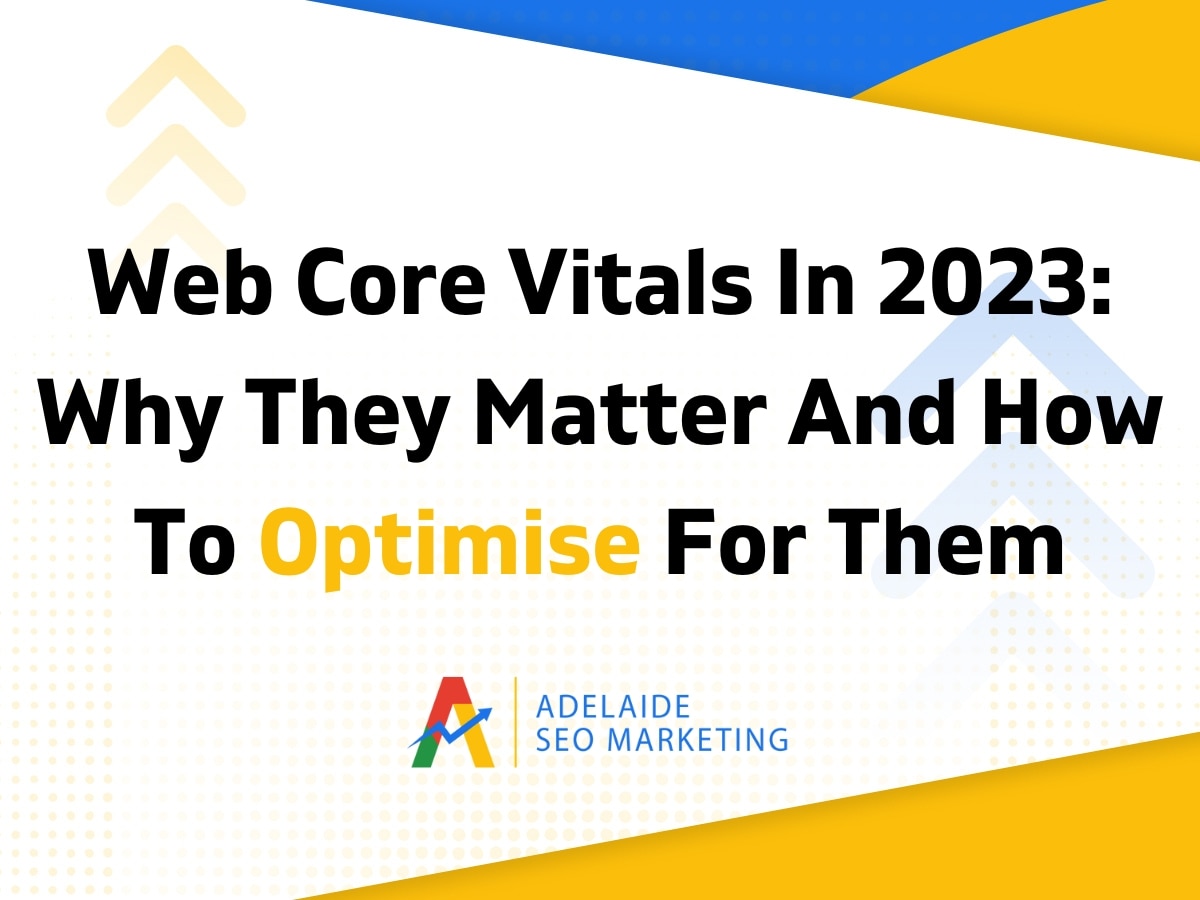As the digital landscape evolves, so do the metrics that determine a website’s performance. Enter Google’s Web Core Vitals, a set of metrics introduced to evaluate the user experience of web pages. In 2023, with the increasing emphasis on user-centric performance metrics, understanding and optimising for these vitals is more crucial than ever.
What are Web Core Vitals?
Web Core Vitals are a subset of factors that will be part of Google’s “page experience” score. They consist of three specific user interaction and page loading metrics:
- Largest Contentful Paint (LCP): Measures the loading performance. A good LCP score ensures that the main content of a page loads quickly.
- First Input Delay (FID): Evaluates interactivity. It quantifies the experience users feel when trying to interact with unresponsive pages.
- Cumulative Layout Shift (CLS): Assesses visual stability. It ensures that pages don’t have unexpected layout shifts.
Why Do They Matter?
Google’s mission is to organise the world’s information and make it universally accessible and useful. To achieve this, they need to ensure that the websites they recommend (i.e., rank highly) offer a good user experience. Web Core Vitals are a tangible and quantifiable way to measure this experience.
Optimising for Web Core Vitals
1. Largest Contentful Paint (LCP):
-
Optimise Images: Use modern formats like WebP, compress images, and use responsive images.
-
Minimise CSS: Only load what’s necessary and consider inlining critical CSS.
-
Limit JavaScript: Minimise or defer non-critical JavaScript.
2. First Input Delay (FID):
- Minimise JavaScript: Break up long tasks, optimise your page for interaction readiness, and use a web worker.
- Use a Browser Cache: This helps load content on your page faster.
3. Cumulative Layout Shift (CLS):
- Use Set Size for Images and Videos: Always include width and height size attributes.
- Stabilise Ads: Avoid inserting ads above content, and always reserve space for them.
- Add New UI Elements Below the Fold: This ensures they don’t push content down that the user expects to stay in place.
Tools to Measure and Improve
Several tools can help you measure and improve your Web Core Vitals:
- Google Search Console: Offers a dedicated Core Web Vitals report.
- PageSpeed Insights: Provides insights into how a page performs against all the Core Web Vitals.
- Chrome DevTools: Helps in identifying issues and optimising web pages.
The Future of Web Core Vitals
While the current set of metrics under Web Core Vitals is focused on loading, interactivity, and visual stability, it’s essential to note that this is just the beginning. Google plans to evolve these metrics over time based on user needs and the web ecosystem’s changes.
Conclusion
In the ever-evolving world of SEO, staying updated with the latest metrics and best practices is crucial. By understanding their significance and optimising for them, businesses can ensure better user experiences, leading to improved search rankings and online success.
For those looking to stay ahead in the digital game, focusing on user experience is not just beneficial—it’s essential.
Unlock Digital Excellence with Adelaide SEO Marketing
Dive deep into the world of Web Core Vitals without getting lost! At Adelaide SEO Marketing, we’re not just experts; we’re your partners in navigating the ever-evolving digital landscape. Ready to elevate your website’s user experience and soar in search rankings? Let’s embark on this journey together. Reach out now, and let’s turn challenges into opportunities!
SEO That Converts: More Clicks, More Customers.
Your journey to online success begins here, with Adelaide SEO Marketing. We’re not just a service; we’re your partners in growth.







